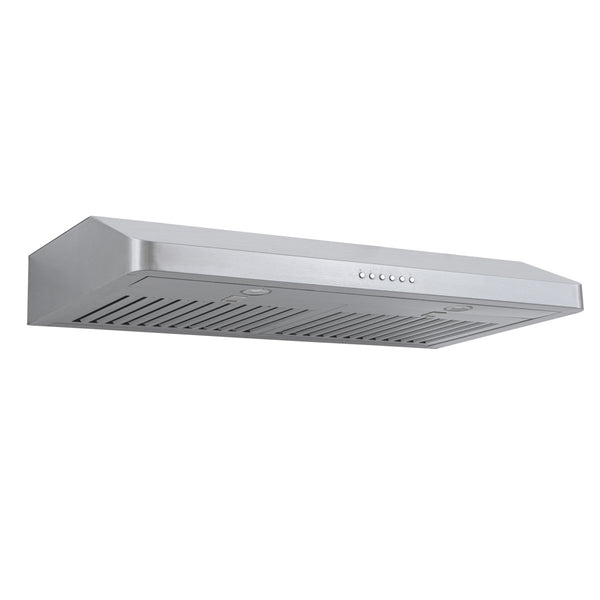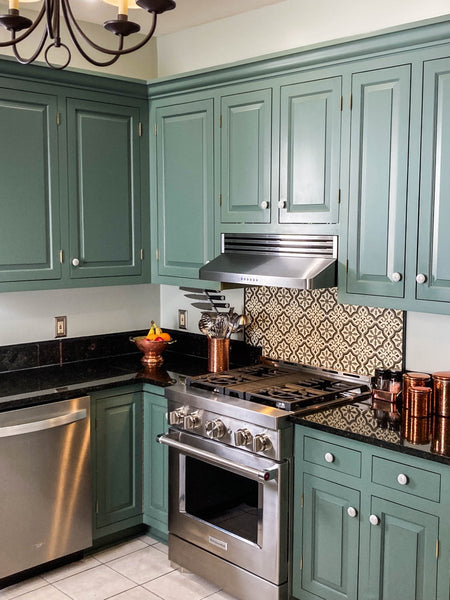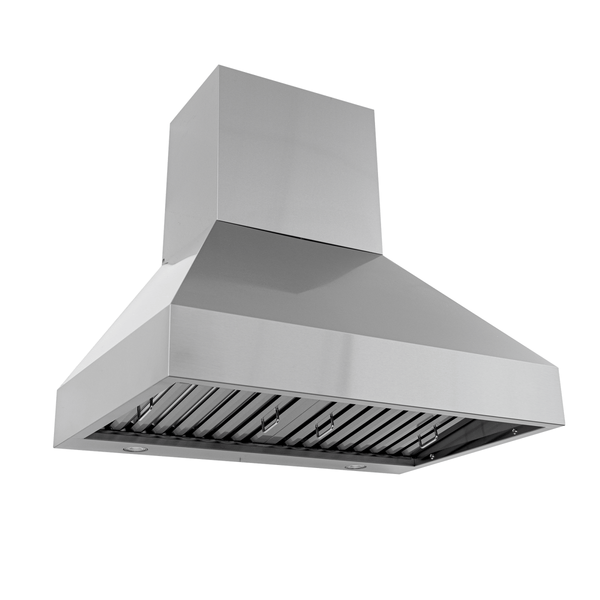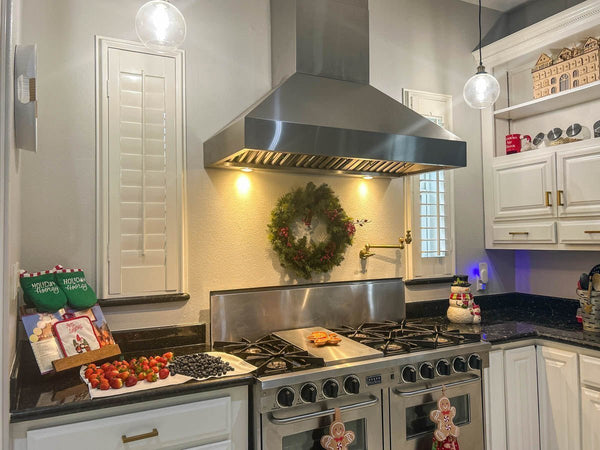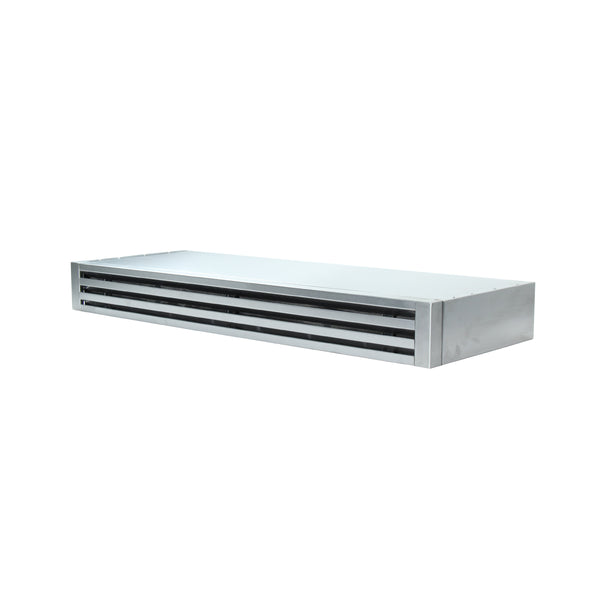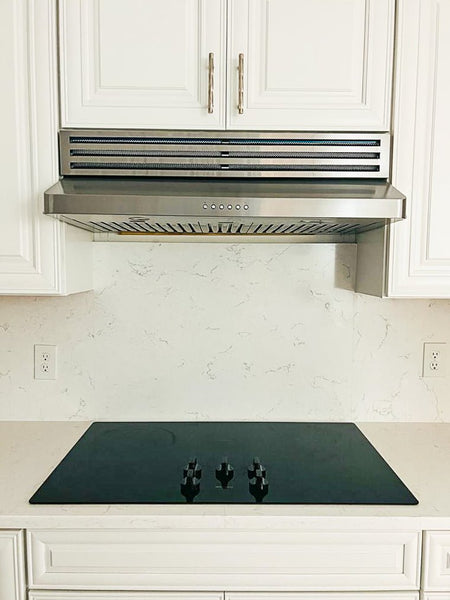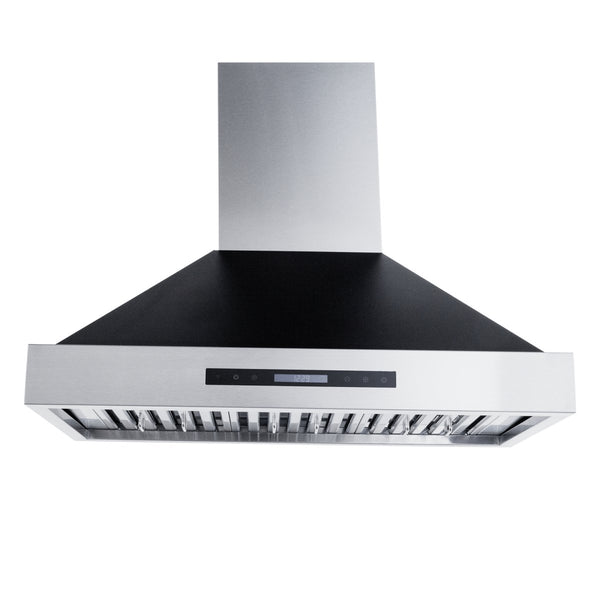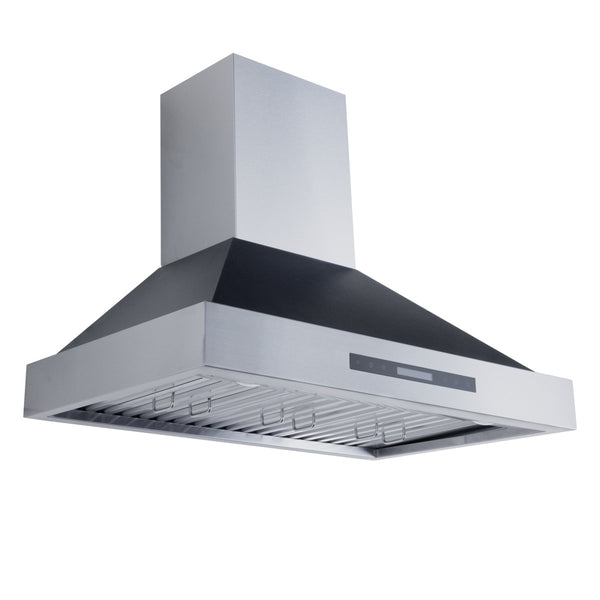When you install your range hood, it’s important to make sure that it’s running efficiently.
In part, this involves reducing or preventing backdrafting from your range hood duct system.
Backdrafting occurs when outside air moves inside your range hood duct. Air moves backward, inside your range hood duct, hence the name “backdrafting.” This reduces the efficiency of your range hood. As a result, you may start to notice smoke and odors that aren’t evacuating from your kitchen.

The best way to prevent backdrafting is to install a backdraft damper, which prevents outside air from moving into the range hood duct. When the hood is on, the damper opens, allowing air to escape outside your home. When your hood is off, the vent closes, preventing outside air from moving inside the duct.
It’s also best practice to install a wall or roof cap, which helps keep outside air from entering the duct. It also keeps dirt, debris, and small animals from entering the duct.
Now that you have some background, we’ll give you some additional tips on how to prevent backdrafting in your range hood duct. We’ll also discuss what can happen if it’s not addressed. Let’s get started.
How to Reduce Backdrafting In Your Range Hood Duct

Install a backdraft damper.
A backdraft damper can be installed inline with your ductwork or at the connection between your hood and the ductwork. For the best results, install an inline backdraft damper a few feet away from the outside of your home.
Backdraft dampers are vents that go inside your duct. They open when the hood is running, to let the air move to the outside of your home.
And they close when it’s not running, to prevent outside air from traveling into the duct.
Install a wall or roof cap.
To further prevent backdrafting, install a wall or roof cap at the end of your duct run. This not only prevents outside air from entering the duct, but it also keeps leaves, dirt, and small animals from coming in.
Make sure that your duct run is less than 30’.
Backdrafting can also occur when air inside the range hood duct moves backward, toward your range hood. This is especially common if your duct runs on an upward incline. THen the air falls back through the hood and into your kitchen.
The range hood needs to move the air with enough force to push it all the way to the outside of your home. So if your duct run is too long, the air may become stagnant in your duct and start to move back into your kitchen.
Reduce the number of elbows in your duct (2 maximum).
More elbows means your air needs more power to get to the outside. If you don’t have that power, the air may move back into your kitchen.
Note: We always recommend that our customers buy a hood with more CFM than they need. This allows the hood to last longer and it’s much more versatile, since you can run it at many different speeds. Learn more about CFM right here.
Here are a few tips to keep in mind when installing your ductwork. This will keep your hood running at peak efficiency.
- When installing your duct, include at least 18″ of straight run before adding an elbow.
- For each elbow in your duct, reduce the total length of your duct run by 5’. For example, a 25 straight run is about equivalent to a 15’ run with two elbows.
- Make sure there is at least 24″ of straight duct between each elbow.
For more helpful tips on making your range hood duct system efficient to prevent backdrafting, click here.
Keep your range hood filters clean.
Clean range hood filters will ensure that your kitchen air runs smoothly through your range hood.
Any slowing of the air at the beginning of the run will only be magnified at the end of your 25’ duct run.
This won’t prevent backdrafting entirely, but it will help the air flow. The slower your kitchen air moves inside the duct, the easier it is for outside air to enter and interfere with your duct system.
So be sure to clean your filters regularly to keep your hood in great condition.
Consequences of Backdrafting in Your Range Hood Duct System

Grease and grime buildup inside your range hood duct
In a range hood duct with backdrafting, not all your kitchen air will make it to the outside. Some of it will remain inside the duct. The grease and oils from that air will attach to the sides of the duct and reduce the efficiency of your hood over time.
Typically, you won’t ever need to clean your range hood duct. Just make sure to clean the filters every three to six weeks.
But if you are looking to do everything you possibly can to address backdrafting, you might need to clean the duct. This can be expensive. Follow our advice in this article and you can avoid that hassle.
Smoke and odors remain inside your kitchen
You may start to notice that smoke and cooking odors aren’t leaving your kitchen as quickly as you’d like.
This may be due to backdrafting. So, make sure you have a backdraft damper and wall or roof cap installed if you notice that your hood isn’t running properly. Double check your duct installation to make sure you’re following the best practices. Or, if you hired a contractor to install the duct, chat with them about your issue and have them take care of it.
Your range hood won’t last as long as it should
When backdrafting occurs, outside air pushes against the kitchen air that’s trying to escape to the outside. So, the duct system is dealing with a lot of resistance.
If your duct system has backdrafting, the motor in your hood has to work harder to move that air out of your home. This puts heavy strain on the motor over time and reduces the lifespan of your range hood.
We hope you found this quick guide on backdrafting and how it applies to range hoods helpful.
If you have any questions about your hood, feel free to call our support team at (877) 901-5530.
For more helpful information on hoods, check out the articles below.
Related Articles
Should a vent hood duct be insulated?
